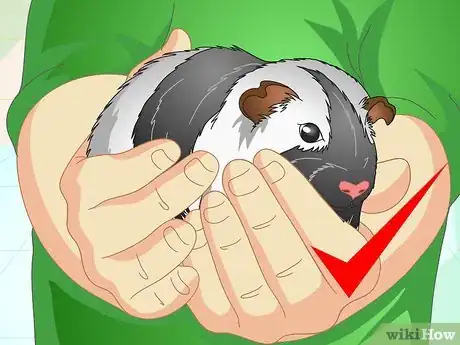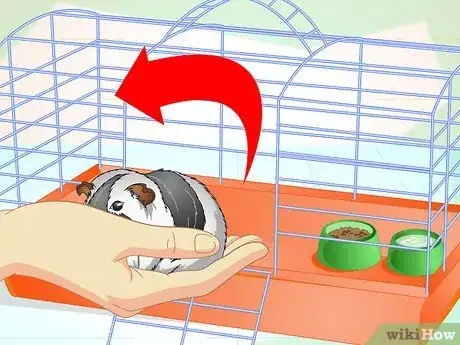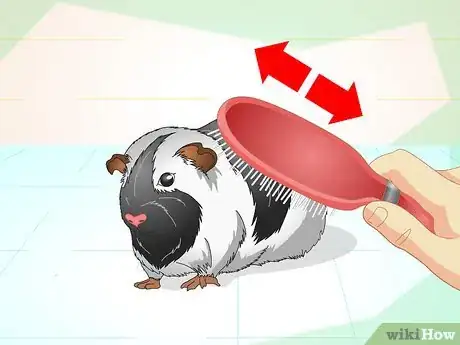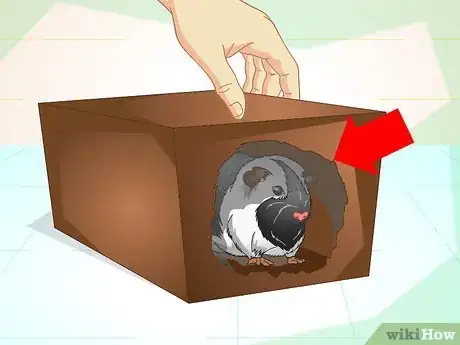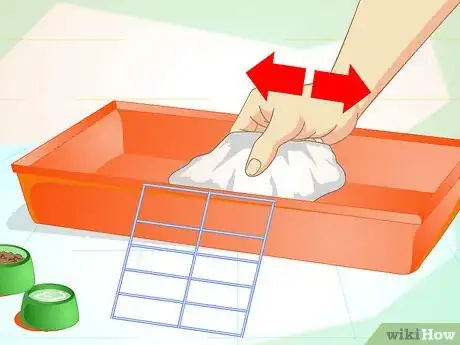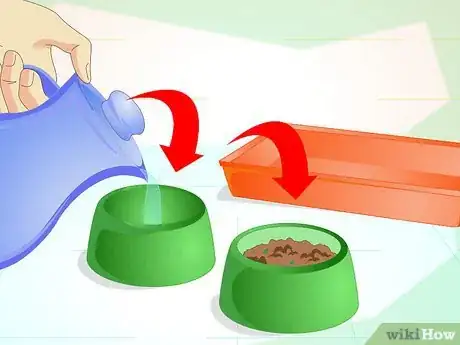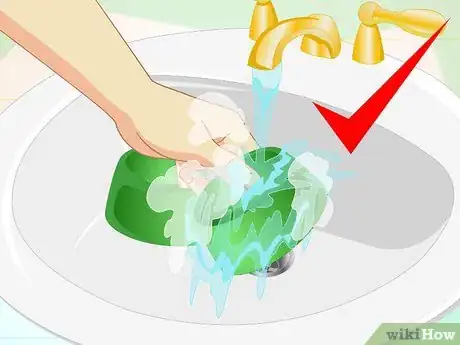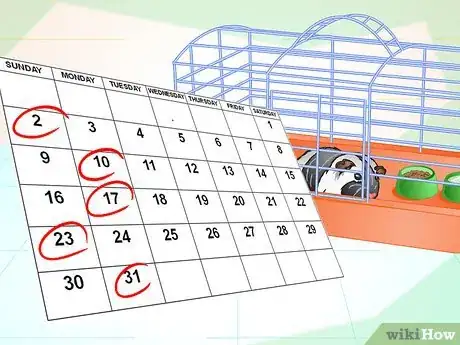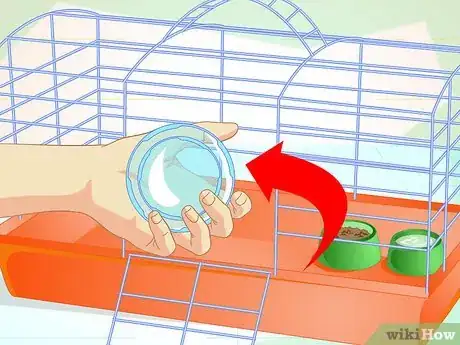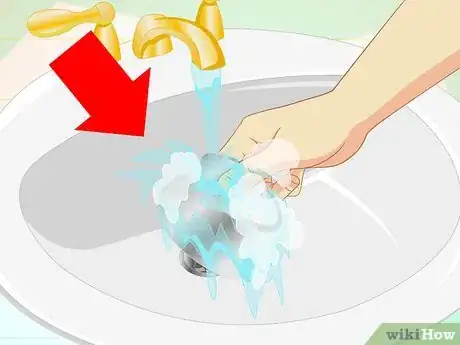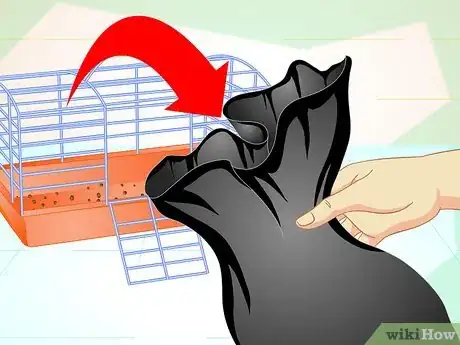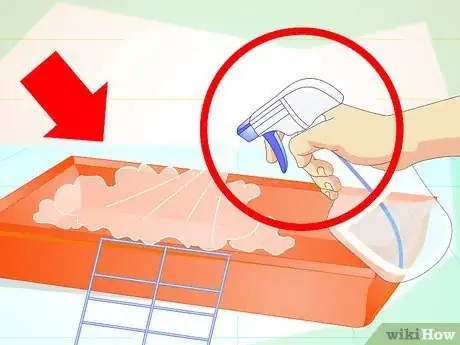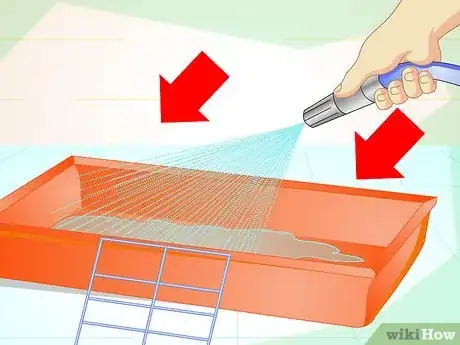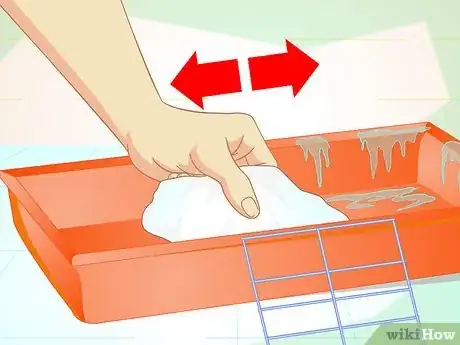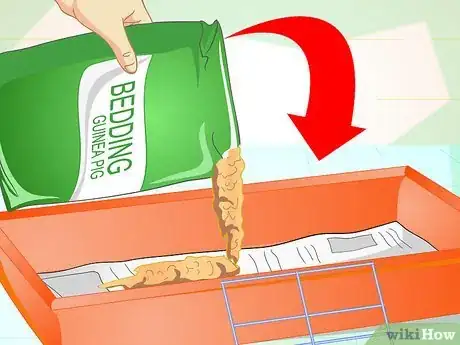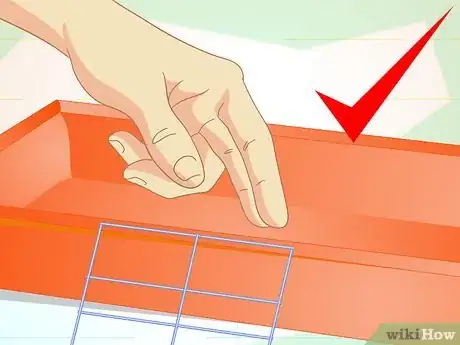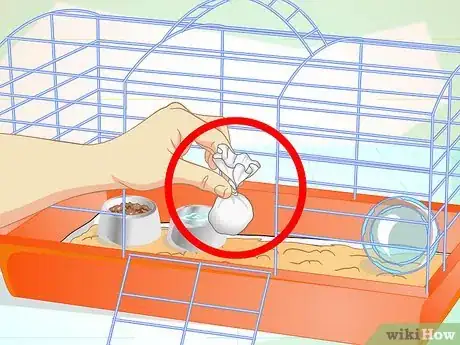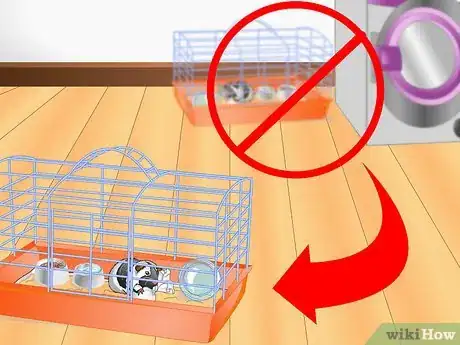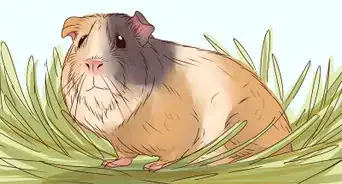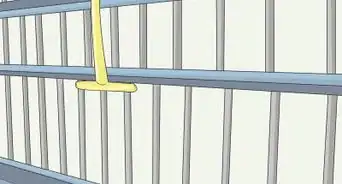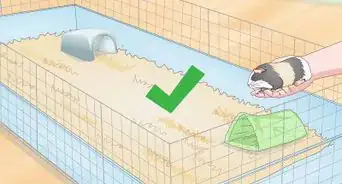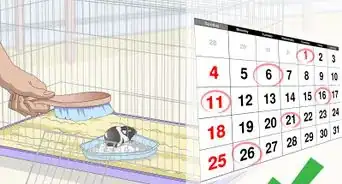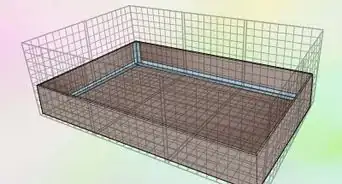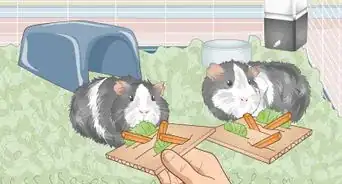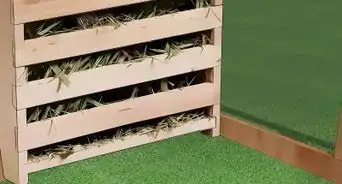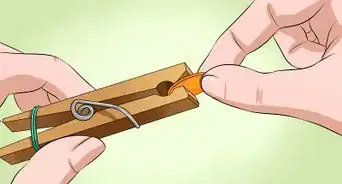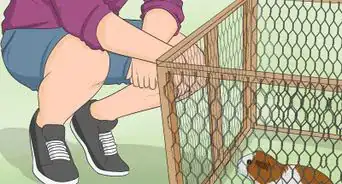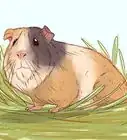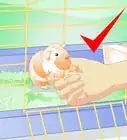This article was co-authored by Pippa Elliott, MRCVS. Dr. Elliott, BVMS, MRCVS is a veterinarian with over 30 years of experience in veterinary surgery and companion animal practice. She graduated from the University of Glasgow in 1987 with a degree in veterinary medicine and surgery. She has worked at the same animal clinic in her hometown for over 20 years.
There are 9 references cited in this article, which can be found at the bottom of the page.
wikiHow marks an article as reader-approved once it receives enough positive feedback. This article received 12 testimonials and 83% of readers who voted found it helpful, earning it our reader-approved status.
This article has been viewed 280,908 times.
Guinea pigs are often prized as excellent pets. They typically have an agreeable personality and tend to have a relatively long lifespan compared to other small pets.[1] But like every pet, guinea pigs need a safe, clean, and healthy environment to thrive.
Steps
Making Your Guinea Pig Comfortable
-
1Restrain your guinea pig. Do this by gently placing one hand around its chest, keeping your thumb beneath the guinea pig's jaw. Use your other hand to support the guinea pig's hindquarters, holding it upright between your two hands.[2]
- It's important to handle your guinea pig firmly enough that it won't fall, but not so firmly as to injure its body. Be aware that if your guinea pig is prone to nervousness or skittishness, it may try to squirm out of your hands and jump, which can lead to serious injury.
-
2Take your guinea pig out of its cage. Once your guinea pig is properly restrained, move it into a safe, enclosed space from which it can't escape. Make sure somebody is around watching your guinea pig, and that there are no loud noises around that may scare it. Someone can hold your guinea pig if you want.Advertisement
-
3Groom your guinea pig, as necessary. Long-haired guinea pigs need to be brushed daily.[3] If you need to groom or bathe your guinea pig, it may be easiest to do so while your pet is out of its cage.
- Unless your guinea pig has gotten sticky or smelly, it should only need to be bathed a maximum of 2-3 times per year.
-
4Give your guinea pig someplace to hide. Your pet should be used to having a designated hiding place in its permanent cage. When you remove your guinea pig from its home, it may become frightened. If you can't fit its permanent hiding place into the temporary enclosed space, make a small temporary space by cutting the bottom out of a cardboard box.[4]
Cleaning Your Guinea Pig's Cage on a Daily Basis
-
1Spot-clean the cage. Remove excess food and waste and spot-clean the cage as needed with a wet paper towel. Scoop out any soiled bedding and replace it with dry, fresh bedding.
-
2Refill food and water. This should be done every single day. If your guinea pig spills water into the food dish, remove that food and replenish the dish with fresh, dry food.
-
3Wash food and water dishes in hot, soapy water. Doing this every day will help prevent bacteria from growing in the food and water receptacles.[5]
Conducting Weekly Cleanings
-
1Plan to conduct thorough cage cleanings about once every week. Though daily maintenance and spot-cleaning are necessary, you will also need to thoroughly clean out your guinea pig's cage once every week. This will ensure that your guinea pig is healthy and happy, and its environment is odor-free.
-
2Remove everything from your guinea pig's cage. When you're doing a thorough cage cleaning, remove all of your pet's toys, as well as its food bowl, water bottle, and hiding place.
-
3Wash the water bottle and food bowl. A guinea pig will often get pieces of bedding and/or droppings into its food bowl, so it's important to clean food and water bowls regularly.[6]
- Empty any leftover food and water. Then run some hot water and submerge the water bottle and food bowl. Leave them in the sink to dry while you clean out the cage.
- If your pet's hiding place can be washed, it's a good idea to rinse it off as well.
-
4Take your cage to where you plan to clean it and get a large garbage bag. Carefully brush everything into the bag, removing all substrate material from the enclosure.[7]
- For really big cages, it is handy to have a cat-poop scooper to scrape out the cage. Do not use the same one as your cat, dog or other pet.
-
5Spray the inside of the cage down. You can use a mild detergent, or mix three-parts warm water and one-part distilled white vinegar. You can also use 1 part bleach to 32 parts water (1/2 cup bleach to 1 gallon of water).[8]
- For deeper stains and messes, use undiluted vinegar, but make sure to clean off well afterward!
- Allow the disinfectant to sit on the surface for 10 minutes so that it has time to work, killing bacteria and other harmful elements.[9]
-
6Rinse the cage out. After allowing the disinfectant to sit, thoroughly rinse off every surface of the cage with hot water. Make sure there is no residue from the disinfectant on any surface.[10]
-
7Dry the cage with paper towels. If you have the time, you can let it air dry. It's important to be sure your guinea pig's cage is completely dry before laying down the newspaper and bedding, as dampness can quickly cause a mold problem that can lead to illness for your pet.[11]
Setting Up Your Pet's Home
-
1Line the cage with fresh and clean new newspaper, then fill with bedding. You should make the bedding about 1-3 inches deep, or 2.5-7.6 centimeters.
- You should never use cedar or pine shavings. Though these wood chips are often sold for use in cages, they actually contain chemicals which can be harmful to your guinea pig.[12]
- Generally speaking, hay makes a good bedding choice. But damp hay can harbor fungal growth, and dry, dusty hay could cause respiratory problems.
-
2Be sure the cage is completely dry before you put down newspaper and bedding. Putting down new bedding and newspaper on a damp surface can quickly lead to mold and fungus growth in the cage.
-
3Put the cage back together (if you took it apart) and put the toys and things back in their places. Hide your pet's favorite treats in paper towel rolls or hang them up by a piece of string. (But make sure your piggy can reach it!)
-
4Control the environment. Remember that guinea pigs need a constant temperature, and your pet's cage should not be exposed to direct sources of heat or cold. It's best to keep the room temperature from dropping below 70 degrees Fahrenheit (21.1 degrees Celsius) or getting above 90 degrees Fahrenheit (32.2 degrees Celsius).[13]
Expert Q&A
Did you know you can get expert answers for this article?
Unlock expert answers by supporting wikiHow
-
QuestionWhat does "spot cleaning" mean?
 Pippa Elliott, MRCVSDr. Elliott, BVMS, MRCVS is a veterinarian with over 30 years of experience in veterinary surgery and companion animal practice. She graduated from the University of Glasgow in 1987 with a degree in veterinary medicine and surgery. She has worked at the same animal clinic in her hometown for over 20 years.
Pippa Elliott, MRCVSDr. Elliott, BVMS, MRCVS is a veterinarian with over 30 years of experience in veterinary surgery and companion animal practice. She graduated from the University of Glasgow in 1987 with a degree in veterinary medicine and surgery. She has worked at the same animal clinic in her hometown for over 20 years.
Veterinarian "Spot cleaning" refers to cleaning the dirty places or "spots" in the hutch or run. Thus, you'd scoop out soiled bedding contaminated with urine, droppings, or spilt water and replace it with clean dry bedding. This is important as it reduces the ammonia level in the environment, and helps to keep the guinea pigs healthy.
"Spot cleaning" refers to cleaning the dirty places or "spots" in the hutch or run. Thus, you'd scoop out soiled bedding contaminated with urine, droppings, or spilt water and replace it with clean dry bedding. This is important as it reduces the ammonia level in the environment, and helps to keep the guinea pigs healthy. -
QuestionI have a 30 x 20" guinea pig cage with upper kitchen area, would that be suitable for 1 guinea pig?
 Pippa Elliott, MRCVSDr. Elliott, BVMS, MRCVS is a veterinarian with over 30 years of experience in veterinary surgery and companion animal practice. She graduated from the University of Glasgow in 1987 with a degree in veterinary medicine and surgery. She has worked at the same animal clinic in her hometown for over 20 years.
Pippa Elliott, MRCVSDr. Elliott, BVMS, MRCVS is a veterinarian with over 30 years of experience in veterinary surgery and companion animal practice. She graduated from the University of Glasgow in 1987 with a degree in veterinary medicine and surgery. She has worked at the same animal clinic in her hometown for over 20 years.
Veterinarian
-
QuestionI can't stand the smell of vinegar. Are there any other options?
 Pippa Elliott, MRCVSDr. Elliott, BVMS, MRCVS is a veterinarian with over 30 years of experience in veterinary surgery and companion animal practice. She graduated from the University of Glasgow in 1987 with a degree in veterinary medicine and surgery. She has worked at the same animal clinic in her hometown for over 20 years.
Pippa Elliott, MRCVSDr. Elliott, BVMS, MRCVS is a veterinarian with over 30 years of experience in veterinary surgery and companion animal practice. She graduated from the University of Glasgow in 1987 with a degree in veterinary medicine and surgery. She has worked at the same animal clinic in her hometown for over 20 years.
Veterinarian
Warnings
- Do not use wood chips or sawdust as they cause serious harm to your pet. Cedar bedding can cause many health problems, as can pine. Kiln-dried pine is suitable for bedding if nothing else is available.⧼thumbs_response⧽
- Always have someone supervising your guinea pigs. Guinea pigs are naturally curious and can get into a lot of trouble.⧼thumbs_response⧽
- Cleaning your pig's cage at least every week is very important in maintaining your pet's health.⧼thumbs_response⧽
- Guinea pigs need a constant temperature. Your guinea pig's cage should not be exposed to direct sources of heat or cold.⧼thumbs_response⧽
References
- ↑ http://www.humanesociety.org/animals/guinea_pigs/
- ↑ http://www.ahwla.org.uk/site/tutorials/BVA/BVA07-GPig/GPig.html
- ↑ http://pets.petsmart.com/guides/guinea-pigs/caring-guinea-pig.shtml
- ↑ https://www.aspca.org/pet-care/small-pet-care/guinea-pig-care
- ↑ http://www.peteducation.com/article.cfm?c=18+1798&aid=3579
- ↑ http://www.humanesociety.org/animals/guinea_pigs/tips/guinea_pig_feeding.html
- ↑ http://www.peta.org/living/companion-animals/caring-animal-companions/caring-guinea-pigs/
- ↑ http://www.peteducation.com/article.cfm?c=18+1798&aid=3579
- ↑ http://www.peteducation.com/article.cfm?c=18+1798&aid=3579
- ↑ http://www.peteducation.com/article.cfm?c=18+1798&aid=3579
- ↑ http://www.humanesociety.org/animals/guinea_pigs/tips/guinea_pig_housing.html?credit=web_id139895298
- ↑ http://www.humanesociety.org/animals/guinea_pigs/tips/guinea_pig_housing.html?credit=web_id139895298
- ↑ http://www.peta.org/living/companion-animals/caring-animal-companions/caring-guinea-pigs/
- ↑ http://www.rspca.org.uk/adviceandwelfare/pets/rodents/guineapigs/environment
About This Article
If you're unsure how to clean your guinea pig's cage, perform a spot clean daily by removing excess food and wiping the cage with a paper towel. Before feeding your guinea pig every day, clean the food bowl and water bottle to remove bacteria. Once every week, conduct a thorough clean of the cage by removing all of the contents, spraying down the cage with a mild detergent, and rinsing it with water. To finish, dry the cage, replace its contents, and return your guinea pig to its home. For advice on how to keep your guinea pig comfortable while you clean the cage, read on!
